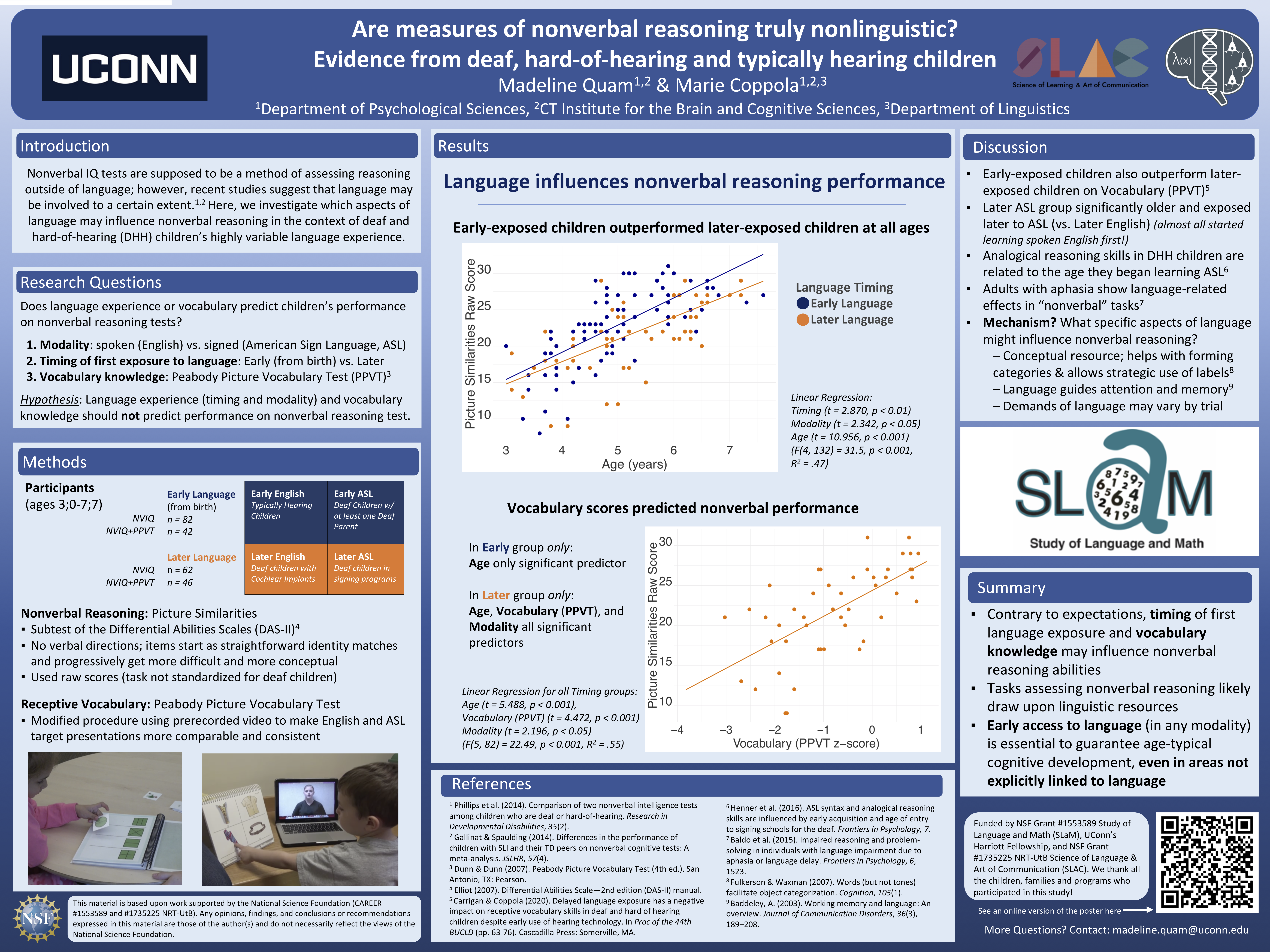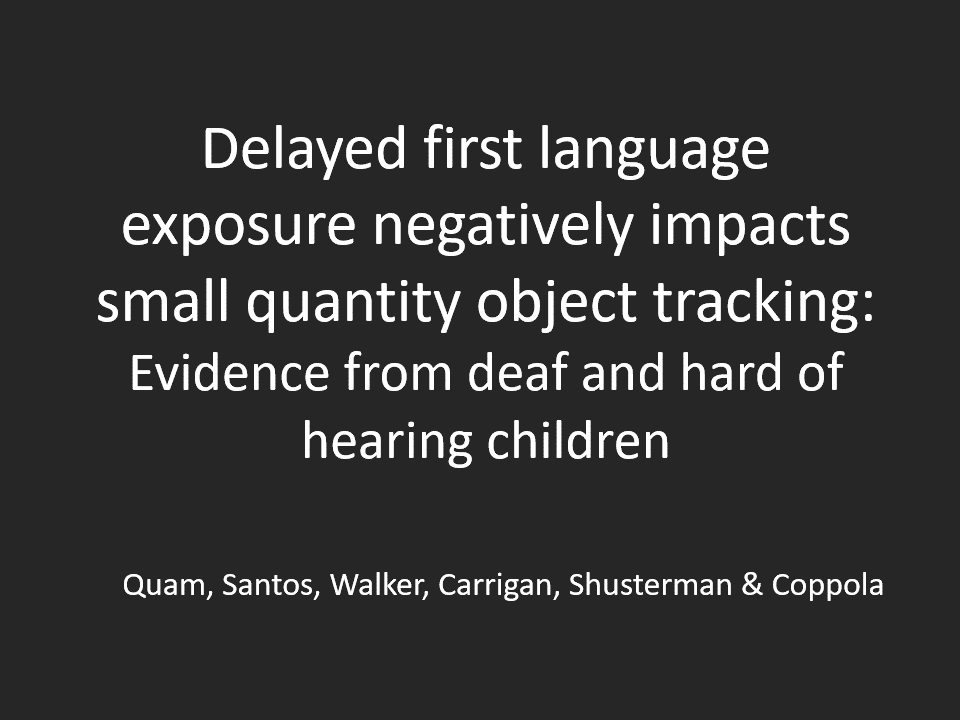Research
How do we represent events with and without language? (doctoral dissertation work)
Thematic roles, like agent (the one who does or causes an action) and patient (the one who is affected by or receives the action), are important parts of language (Rissman & Majid, 2019; Dowty, 1991). But do these concepts exist because language created these categories? Or is there some kind of underlying concept of agent and patient that exists prior to the influence of language? Here, I am looking at homesigners, deaf individuals with limited to no exposure to signed or spoken language who innovate homesign systems in order to communicate with the people around them (Brentari & Coppola, 2012). This project seeks to investigate the influence of language on concepts of agent and patient by using methodology that encourages homesigners to produce as much information as possible (reducing argument dropping) and examining both linguistic and nonlinguistic representations.
How does language experience affect small quantity object tracking? (master’s thesis work)
Representing small quantities (i.e., 1–3) is thought to be independent of language (Carey, 2009). However, recent findings from the SLAM Project suggest that timing of language exposure (from birth vs. later) may influence small quantity object tracking. Deaf and hard of hearing (DHH) children with language access starting from birth (e.g. DHH children with deaf signing parents) performed better on a small quantity object tracking task compared to DHH children with later access to language (e.g. born to hearing parents and started acquiring spoken English via hearing technology or ASL at a signing school). While language modality (signed vs. spoken) did not predict object tracking performance, knowledge of the cardinal principle (understanding number word meanings) did. Children who were cardinal principle (CP) knowers performed significantly better on a small quantity object tracking task than children who were not CP-knowers. Current research directions involve investigating other predictors of object tracking performance.
How are handshape preferences shared (or not) amongst homesigners and their communication partners?
Since there is typically little to no contact between homesigners and thus no actual linguistic community, each homesigner must create their own unique system to use with their communication partners, the hearing family members and friends who interact with the homesigner. We investigated whether handshape patterns for labeling objects, a common typological variation that exists in sign languages, are shared by homesigners and their communication partners. Among families with homesigners, we detected no universal handshape preference in either the homesigners or the communication partners. Although families with adult homesigners shared more similarity in their iconic handshape patterns than families with child homesigners, overall, there was still a great deal of variation and no families achieved reliable conventionalization of handshape types, even after several decades.
A child completing “Mr. Elephant”, an object tracking task. 
BUCLD poster (2022). 
MCLS poster gif (2020). 
